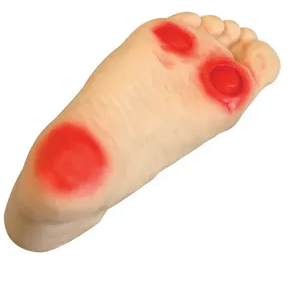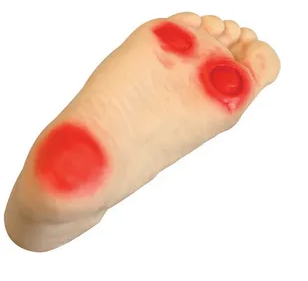Evaluating the effectiveness of a diabetic foot care model in training is a systematic and comprehensive process that takes into account multiple aspects to ensure the accuracy and practicality of the assessment. Here are some suggestions for evaluating the effectiveness of a diabetic foot care model in training:

First, we need to define the objectives and indicators of the assessment. Evaluation goals should be aligned with training goals, including improving the knowledge, skills, and attitudes of caregivers in diabetic foot care. Evaluation indicators can include knowledge test scores, skill operation scores, patient satisfaction, and self-assessment of nursing staff.
Second, we can use a variety of assessment methods. For example, feedback from caregivers on the training process and model can be collected through questionnaires to understand their views on the model's acceptance, ease of use, and teaching effectiveness. In addition, practical operation assessment can also be carried out to observe whether nursing staff can correctly and skillfully carry out diabetic foot care operations under simulated scenarios.
In the evaluation process, we need to pay attention to the practical operation ability and nursing effect of the nursing staff. By comparing the skill operation scores and patient satisfaction before and after the training, we can objectively evaluate the effect of the model in improving the skills of nurses. At the same time, we can also observe whether the model can simulate the real pathological changes of diabetic foot, and whether the nursing staff can make correct nursing decisions and operations according to the simulated situation.
In addition to the assessment of the caregiver, we can also evaluate from the perspective of the patient. By collecting patient feedback on how satisfied they were with the caregiver's care and whether any complications or adverse events occurred, the effectiveness of the model in training can be further validated.
Finally, we need to analyze and summarize the evaluation results. Based on the evaluation results, we can understand the strengths and weaknesses of the model in training, as well as areas for improvement. At the same time, we can also adjust the training content and method according to the evaluation results, so as to better meet the training needs of nursing staff and improve the training effect.
In conclusion, to evaluate the effect of the diabetic foot care model in training, it is necessary to adopt a variety of evaluation methods, pay attention to the practical operation ability and nursing effect of the nursing staff, evaluate from the perspective of the patient, and analyze and summarize the evaluation results. This can ensure the accuracy and practicality of the assessment, and provide strong support for further improving the quality of diabetic foot care.

